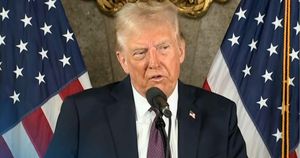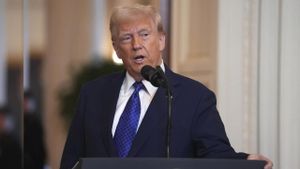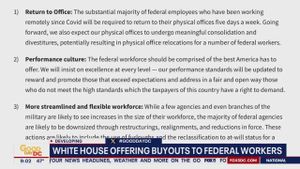The Iranian regime has been accused of covertly developing nuclear warheads as part of its ballistic missile program, according to alarming reports from the National Council of Resistance of Iran (NCRI). The findings come as tensions continue to mount between Iran and other nations, especially over its military ambitions.
At the end of last month, the NCRI released detailed allegations asserting the development of nuclear warheads capable of being mounted on long-range missiles. The organization claims this is occurring at the heavily monitored missile sites of Shahrud and Semnan, which the Iranian government has publicly labeled as facilities for rocket and satellite research. These claims were based on intelligence gathered by the People’s Mojahedin Organization of Iran (MEK).
According to the report, the Organization of Defensive Innovation and Research (SPND) — Iran’s chief nuclear agency — is at the forefront of these developments. Alireza Jafarzadeh, deputy director of NCRI’s U.S. office, emphasized at a Washington press conference, “The goal of this program is to build a nuclear warhead mounted on a solid fuel missile with a range exceeding 3,000 kilometers.” This target range puts much of Europe within reach, raising significant concerns among Western allies.
What’s troubling is the dual nature of these facilities. The NCRI alleges both Shahrud and Semnan serve as dual-use locations where satellite launch capabilities are secretly integrated with missile development efforts. Jafarzadeh revealed, “They have camouflaged the whole operation... as a space initiative.” Despite these claims, the real focus appears to be on creating nuclear warheads under the cloak of expansive space programs.
Specifically, the Shahrud site, located about 250 miles northeast of Tehran, is believed to serve as the center for developing nuclear warheads compatible with the Ghaem-100 missiles, which are reportedly modeled after North Korean designs. This has prompted fears of Iran's burgeoning military technology and its possible proliferation.
The Semnan facility, on the other hand, is said to support underground tests related to nuclear detonation, marking it as another focal point within Iran's nuclear ambitions. “We know the name of the engineering company involved... it’s called Shams Omran Engineering Company,” Jafarzadeh stated, pinpointing key players behind this covert operation.
Soona Samsami, representing the NCRI, pointed out the Iranian government’s history of manipulation. “For over two decades, they have used negotiations and the West's leniency as a means to advance their nuclear weapons program, threatening global peace and stability.” Her comments reinforce the urgent need for the international community to reassess how it engages with Iran amid these revelations.
The Iranian regime is perceived to be more desperate than ever, partly due to setbacks faced by its regional proxies, including Hezbollah and Hamas. Samsami asserted, “Tehran has never been as weak and vulnerable as it is today,” yet this vulnerability has reportedly propelled Iran to accelerate its nuclear development efforts as means of deterrence.
This latest information arrives as tensions continue to rise over Iran's military capabilities. Only days after the NCRI’s report, the Iranian government unveiled its new ballistic missile, Etemad, boasting a range of 1,700 kilometers, emphasizing the scope of its military advancements. Iranian President Masoud Pezeshkian stated during the announcement, “These military developments are intended to assure other nations of our deterrence capability.”
The NCRI has long positioned itself as a watchdog of the Iranian regime's clandestine activities, warning the international community of the regime's intentions to develop nuclear capabilities. At the press conference, Jafarzadeh warned against repeating the mistakes of the past, criticizing earlier diplomatic negotiations for allowing Iran time to progress its nuclear agenda unchallenged.
:"The regime is trying to buy time through negotiating with European countries... aiming to maintain the current status quo to complete its weapons program.” This long-standing capability for deception is at the heart of why many experts argue for immediate and decisive action against Iran.
To combat these growing threats, the NCRI urged the implementation of urgent measures. They recommended reinstatement of UN Security Council resolutions and enacting the snapback mechanism, which would automatically impose sanctions on Iran if certain thresholds are broken. “Shut down all nuclear-related sites and grant the IAEA unrestricted access,” they called for, stressing the need for transparency.
Drawing attention to the impending expiration of key nuclear limits set by international agreements, their warnings serve as stark reminders of the time frame within which the global community must act. The serious allegations surrounding Iran’s nuclear ambitions reflect the potential for significant destabilization, not just regionally but worldwide.
Jafarzadeh concluded emphatically, "If that's the case, then honestly speaking, there's only one sure way left to end [Iran's nuclear ambitions] — and that's ending the rule of the Ayatollah.” His call for drastic measures underlines the urgency of the situation and the high stakes involved, urging the global community to reassess its strategies before it’s too late.



